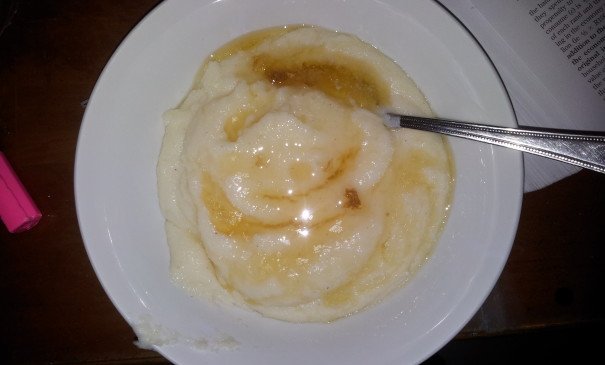
A Familiar Meal, from Cape Town to Glasgow to the American South

A Familiar Meal, from Cape Town to Glasgow to the American South
Mealie Meal in Cape Town
One of my favorite movies growing up was My Cousin Vinny. Spoiler alert: unlikely New York lawyer Joe Pesci cracks a murder trial on the question of how long it takes Southerners to make fresh—not instant—grits in the morning. In my ignorance, I pictured grits as some kind of edible creature, like tiny shrimp. I hadn’t realized I had been eating grits at my grandmother’s house in Cape Town every Christmas.
Because grits are similar to what my South African relatives call mealie meal: a ground maize flour that, mixed with different proportions of water, produces a stodgy porridge, or a more solid “pap.” There are hundreds of names for this staple around Africa and beyond, but the term I learned first is a jolly distortion of milho, because Portuguese traders brought the maize from the Americas to Africa. (A “mealie” is a pleasing local term for corn-on-the cob.) Mealie meal often fortifies savory dishes, and grits come with cheese or shrimp. But around South Africa’s Western Cape, it’s common to sweeten this culinary blank slate with sugar, honey, and milk for breakfast, which is how I was weaned onto it in the 1980s, armed with a large spoon and a sweet tooth.
It was only the presence of this local porridge (and the revered Mrs Ball’s Chutney) that could place my grandmother’s first-generation breakfast table—decked out with lime marmalade, tea, eggs, and marmite—in the Cape rather than, say, London, Bootle, or even Glasgow, where her mother was born. True, the Brits who make their way abroad have a certain reputation for clinging to their peculiar routines, hemisphere be damned, but their roots weren’t that deep. Her mother’s family had emigrated from the grey west coast of Scotland to the dry heat of Durban. My grandmother absorbed plenty of earnest Scottish attributes, but otherwise rebelled against her strict Presbyterian background. (Secular to the end, her final wishes were that we forego a funeral in favor of a Pimms-fuelled party, and scatter her ashes—illegally—around Kirstenbosch Botanical Gardens and St James’ Beach. We complied.)
I was young when she died. So I learned the milestones of her life in South Africa only afterwards: driving an ambulance for the Red Cross in Durban during the war; hanging out with Roald Dahl, who was in East Africa with the King’s Africa Rifles; protesting against the National Party’s repugnant apartheid laws with the Black Sash movement.
These days, we make it back around once a decade. My mother left Cape Town in the 1960s to follow science studies to Heidelberg, then Vienna, and would never return for good. My aunt and her family returned several years ago, after some decades abroad that started in pre-Revolutionary Iran and ended in Wimbledon. My uncle’s three daughters never left. And now when we return and eat at their tables in Cape Town or Johannesburg, there is far more than just mealie meal to represent the continent they made their home.